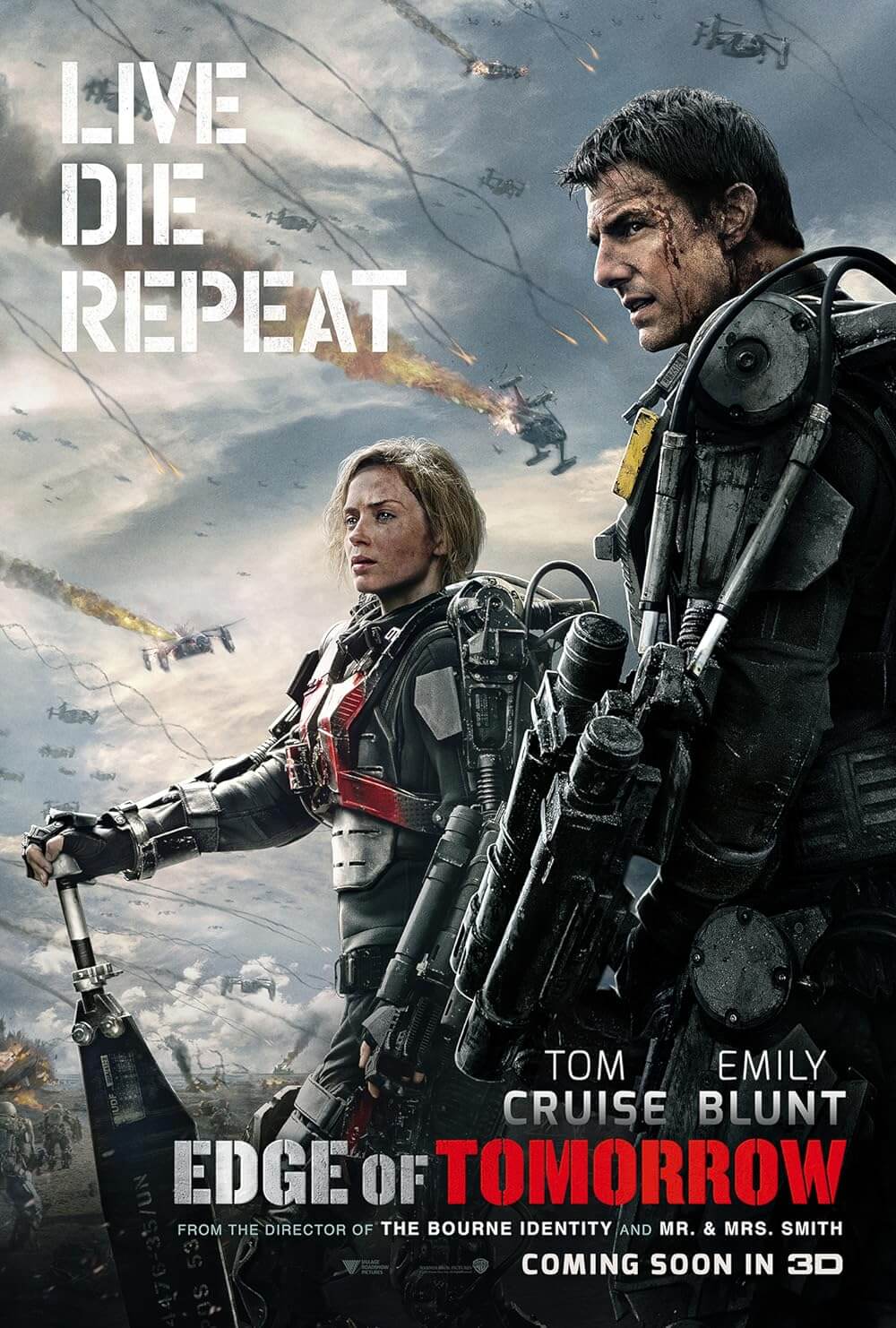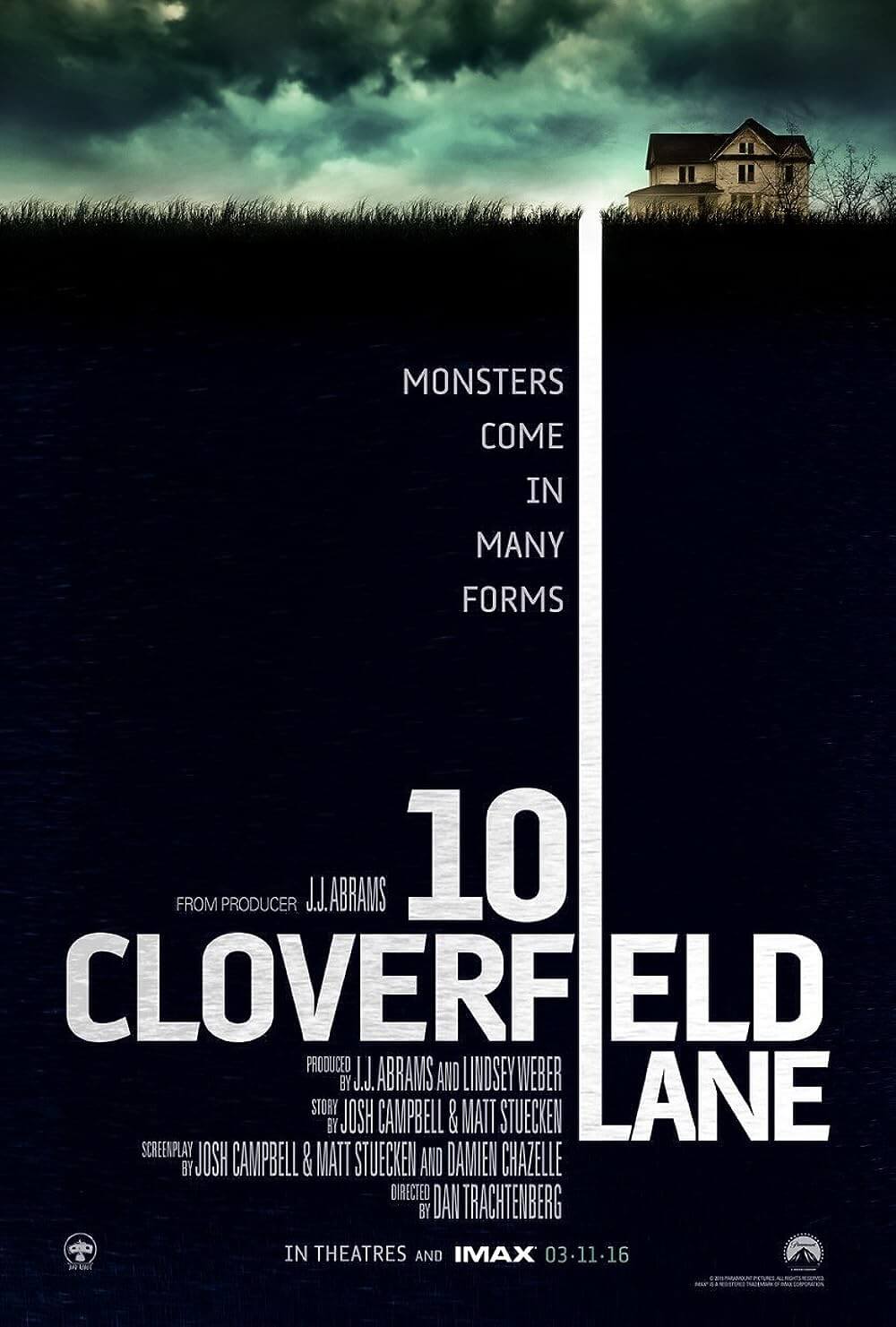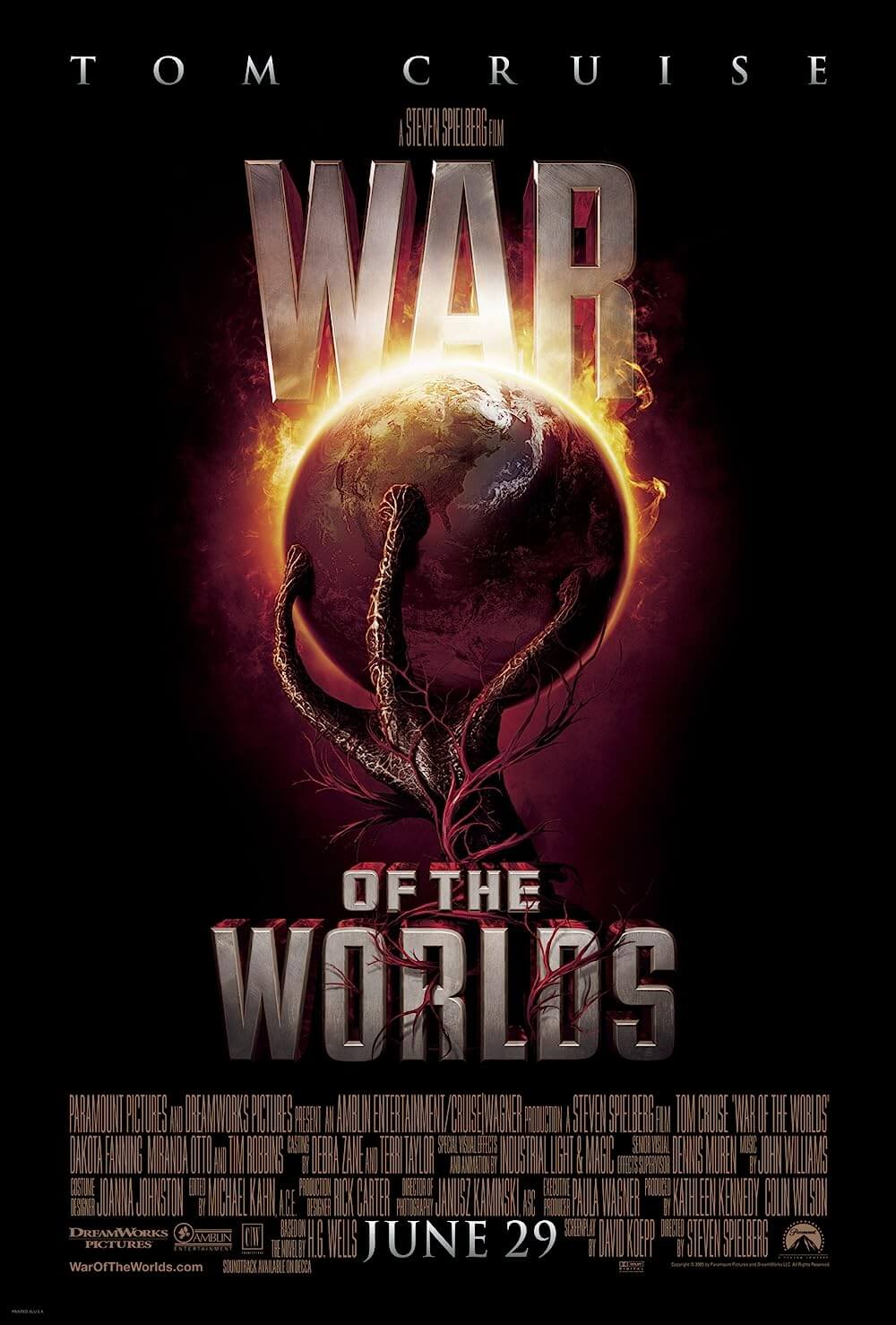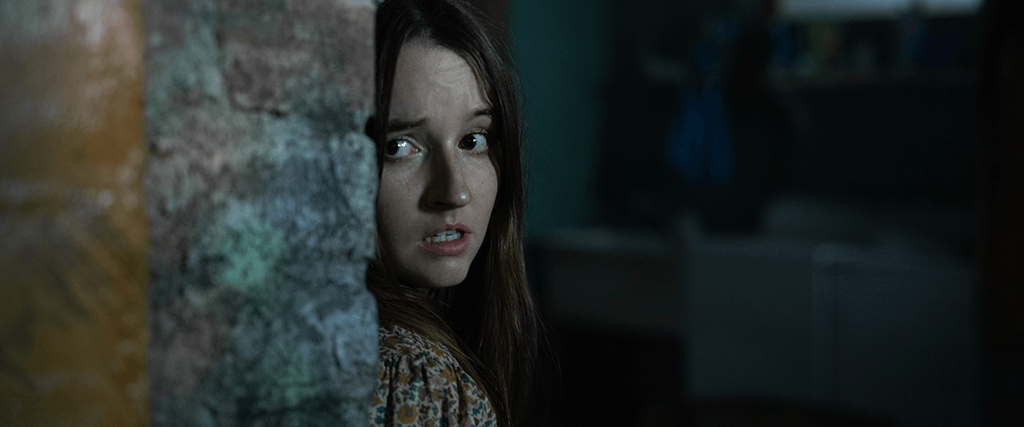
No One Will Save You
By Brian Eggert |
You might find No One Will Save You some night while scrolling through the streaming options on Hulu. Based on its preview image, it looks like some run-of-the-mill alien invasion yarn relegated to a streaming debut, and if 20th Century Studios really believed in it, they would have released it in theaters. But then you press play anyway, expecting to be mindlessly diverted by some B-movie fun. It starts well enough, following a young woman named Brynn, played by Kaitlyn Dever, who lives alone in a large but cozy home on the outskirts of a small town. She makes crafts and grapples with social anxiety on an idyllic summer day, and later that night, flying saucers appear over her house. Skinny, gray beings with large eyes like golf balls made of black glass enter, and Brynn races to escape and survive. And then, at some point, you begin to realize that you haven’t heard Brynn speak. None of the characters have spoken, apart from some unintelligible biomechanical chatter from the extra-terrestrials. No One Will Save You has cleverly duped you into watching a modern-day silent film, and its rather brilliant conceit is reinforced with marvelous visual storytelling.
Written and directed by Brian Duffield, whose spec script for Love and Monsters was an underrated gem of 2020, No One Will Save You is another of his original ideas situated firmly in genre territory and not based on a previous intellectual property. That alone should garner your interest, given the numbing omnipresence of franchises, sequels, and cinematic universes dominating the theater today. His second go-round as a director, after 2020’s Spontaneous, demonstrates his ambition to do more than replicate the same Hollywood formula ad nauseam. Here’s a film that not only does the alien invasion scenario well but also boasts a daring conceptual agenda, backed up by formal bravado and a terrific lead performance. Made for a mere $22 million, Duffield takes risks with his seemingly modest programmer, and doubtless, that’s why his film ended up on Hulu instead of multiplex screens (that, and Disney needed to feed the content beast of their streaming channel).
From the outset, Dever’s expressiveness draws you in. You get a sense of her character’s personality through her body language and visual cues. She prepares in the mirror in the morning, putting on a sun dress and makeup, practicing her smile and wave, desperate to make a good impression. Surrounded by vintage clothes and objects in her old-fashioned house, Brynn has created or perhaps maintained a sanctuary of yesteryear, sans smartphones and other modern conveniences, with the only evidence of the contemporary setting being an LED TV. As a hobby, she builds a scale model of a small town. Without Duffield’s script having to explain, you can see Brynn is trying to escape reality into a fantasy of her own making. But why? Visits to a graveyard, handwritten letters never sent, and scandalized looks from the townsfolk hint at an answer. In these first few scenes, so much information is conveyed visually that you might even convince yourself that you’ve heard exposition, but you haven’t.
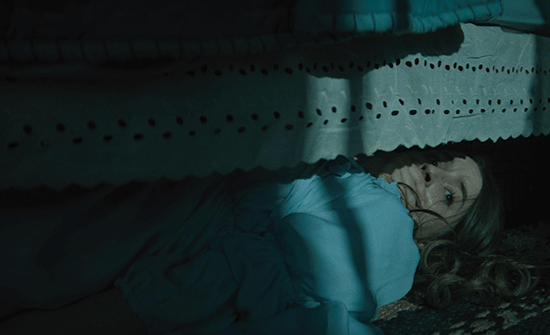 Enter the aliens. Within the first few minutes of their arrival one night, Duffield manages to evoke three Steven Spielberg alien movies, with the flickering power and moving objects of Close Encounters of the Third Kind (1977), the rustling of garbage cans from E.T.: The Extra-Terrestrial (1982), and the quiet maneuvering to avoid detection from War of the Worlds (2005). Duffield’s direction is never better than when Brynn attempts to remain quiet and stay out of sight, while telekinetic beings and a dangerous light from a flying saucer outside attempt to locate her. But it’s not just the gray aliens, who move like a combination of RoboCop and a J-horror ghost. The humanoids have come with their pets—a monkey-dog with vicious claws and a towering, terrifying, mantis-like creature that doubles as a sentinel and an aircraft marshall. Worse, they seem to be guided by a parasite that lives in their throats, and they want one inside of Brynn, too. The CGI used to render them isn’t blockbuster-level, but it’s convincing enough, particularly for at-home viewing.
Enter the aliens. Within the first few minutes of their arrival one night, Duffield manages to evoke three Steven Spielberg alien movies, with the flickering power and moving objects of Close Encounters of the Third Kind (1977), the rustling of garbage cans from E.T.: The Extra-Terrestrial (1982), and the quiet maneuvering to avoid detection from War of the Worlds (2005). Duffield’s direction is never better than when Brynn attempts to remain quiet and stay out of sight, while telekinetic beings and a dangerous light from a flying saucer outside attempt to locate her. But it’s not just the gray aliens, who move like a combination of RoboCop and a J-horror ghost. The humanoids have come with their pets—a monkey-dog with vicious claws and a towering, terrifying, mantis-like creature that doubles as a sentinel and an aircraft marshall. Worse, they seem to be guided by a parasite that lives in their throats, and they want one inside of Brynn, too. The CGI used to render them isn’t blockbuster-level, but it’s convincing enough, particularly for at-home viewing.
No One Will Save You isn’t a completely silent movie. Dever gives Brynn a voice through her breath, to the extent that her performance becomes an exercise in communicating through expressive breathing, nearly speaking words before stopping them in her throat, and quite a lot of screaming once the action starts. You also hear the faintest verbalization at times—the occasional “no” or “c’mon” or “ok”—spoken under an exhale, but nothing so clear as dialogue, save for a single line spoken at an emotionally climactic moment. The approach makes A Quiet Place (2018) and its 2020 sequel sound downright chatty by comparison. The silence also immerses you in the story’s visual momentum, efficiently contained within the 93-minute runtime with plenty of twists and turns.
The third act may lose some viewers, with its break from the relentless chase into the mind of its protagonist. However, Duffield’s screenplay implants enough dramatic substance into the proceedings to earn his rather wild, wholly unpredictable conclusion. For a film that operates at times like established box-office winners, from Home Alone (1990) to Signs (2002), the final scene of No One Will Save You settles on a refreshingly unconventional solution to an otherwise straightforward genre setup. That may turn some of you off, but in my case, it made me appreciate the overall package more. After all, how often do we see such a mainstream movie take boldly formal and narrative swings? It may seem ungainly or out-there at first, but upon reflection, Duffield earns the ending with the subtle ways he has established his main character, and how the resolution fits within the structure like a puzzle piece.
Serving up B-movie art that strives to be more than prepackaged science-fiction entertainment, catered to commercial demands, No One Will Save You is an ambitious variation on a theme. Working within established genres as a screenwriter (see also his work on 2020’s Underwater), Duffield balances narrative economy, alien thrills, and visual risks to produce something that doesn’t feel like it fell off the assembly line. The slick camerawork by cinematographer Aaron Morton and propulsive score by Joseph Trapanese amplify the suspense and bring Duffield’s involving story to life. But it’s Dever (excellent on FX’s Justified and Hulu’s Dopesick) who sells every moment, from the immediacy of her character’s cat-and-mouse experience to the emotional devastation in her past. She even commits to the most outlandish and fantastical final sequence. In the end, it’s easy to admire the film for everything it isn’t, and for zealously adhering to the cinematic rule to show, not tell.
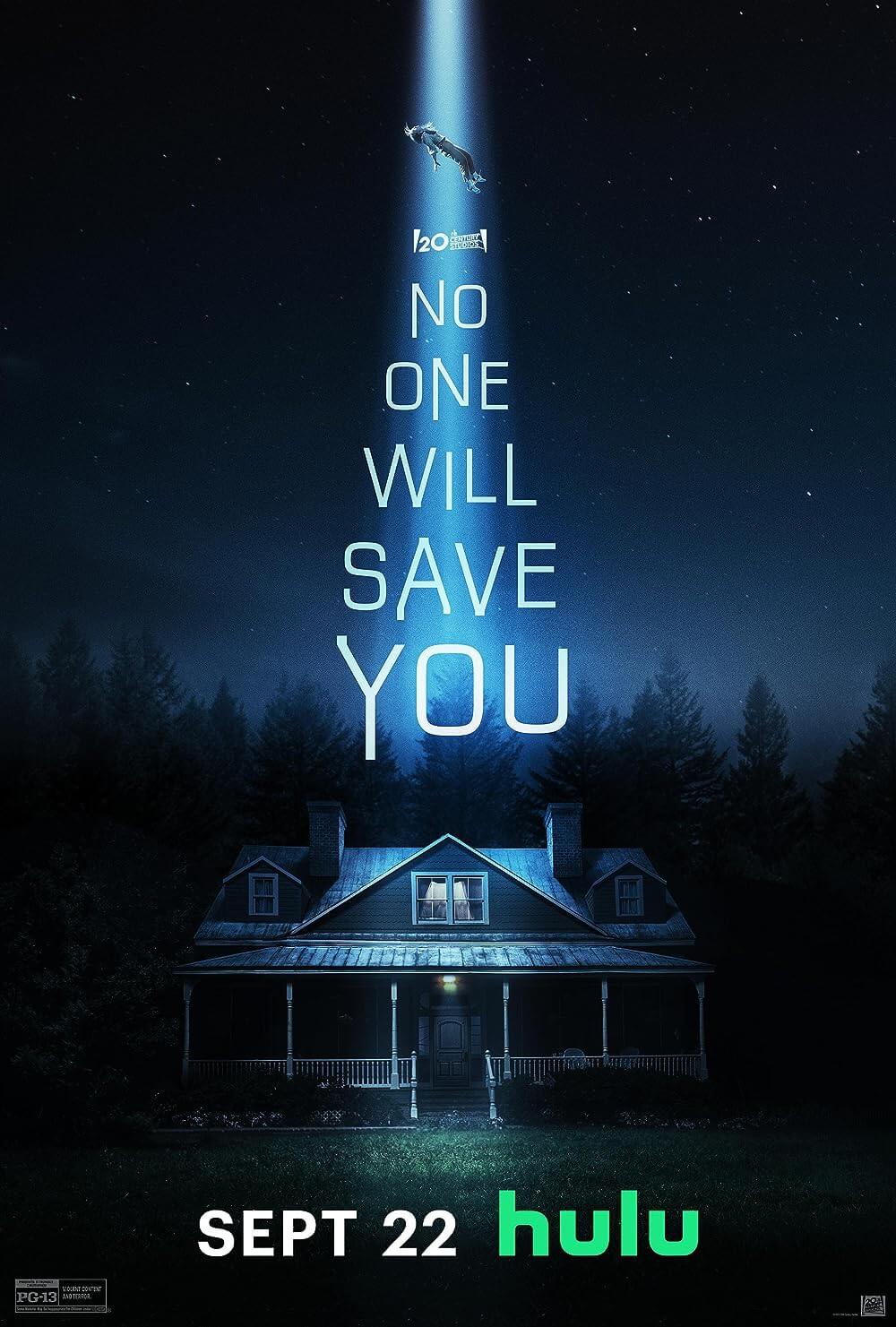
Thank You for Supporting Independent Film Criticism
If the work on DFR has added something meaningful to your love of movies, please consider supporting it.
Here are a few ways to show your support: make a one-time donation, join DFR’s Patreon for access to exclusive writing, or show your support in other ways.
Your contribution helps keep this site running independently. However you choose to support the site, please know that it’s appreciated.
Thank you for reading, and for making this work possible.
Brian Eggert | Critic, Founder
Deep Focus Review


